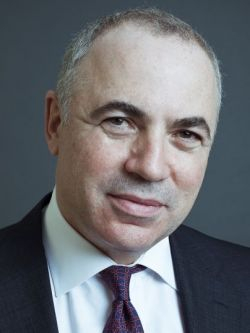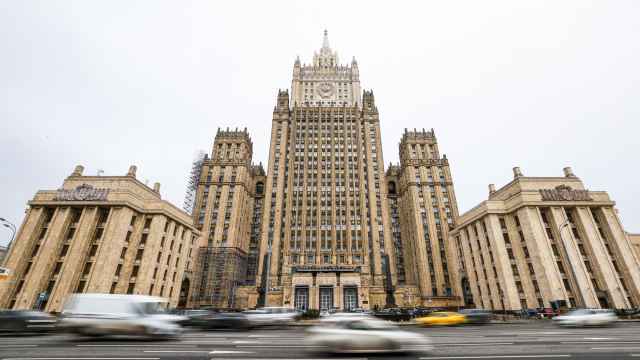
Felix Kugel
Vice-president & Managing Director
ManpowerGroup Russia & CIS
At the beginning of a new quarter, many organizations review their strategies and goals for the months to come. Now is the right time for leaders to reflect on how to enhance organizational effectiveness. Strengthening employee engagement should be a top priority.
Engagement's Role In Organisational Effectiveness
Engagement encompasses more than just traditional notions of job satisfaction. It consists of an active commitment to doing the job well and helping the organization achieve its goals and strategies. Engaged employees take pride in both their organization and their work. A growing body of evidence is emerging to show that engagement is one of the essential levers of individual and organizational productivity and success.
Yet, a growing body of evidence is also emerging to show that in many organizations, levels of employee engagement have reached crisis lows. Our own extensive global research has revealed that worldwide only 34 percent of employees in organizations employing more than 50 people identify themselves as fully engaged, while a huge 50 percent identify themselves as completely unengaged.
Our study surveyed the views of nearly 30,000 employees in 15 countries on a wide range of topics related to organizational effectiveness, including leadership and engagement. We not only discovered a statistically significant correlation between positive assessments of leadership and strong declarations of engagement, but also isolated those leader practices and behaviors that appear to impact engagement most.
Among the several practices and behaviors analyzed, the four showing the highest correlations with engagement are as follows:
1) senior leaders value employees;
2) senior leaders have the capability to make my organization successful;
3) senior leaders effectively implement my organization's strategy;
4) senior leaders effectively communicate my organization's strategy to employees.
What stands out about these drivers is how coherent a picture of employee engagement they present. Employees want to work for successful organizations and for leaders with the capacity to implement strategy and create success (drivers 2 and 3). They also want the organization's strategy to be effectively communicated to them so they can play a meaningful role in realizing that strategy and helping the organization succeed (driver 4). Above all, they want senior leaders to acknowledge their work and value their contribution (driver 1). Senior leaders who ensure that these conditions are satisfied will be rewarded with higher levels of engagement and better business performance. But where to start?
Start With Trust
Building trust through effective communications is an absolute essential. Employees need to trust that their leaders have the capability to make the organization successful. To win that trust, leaders must show that they have a plan, articulate that plan clearly to employees, and demonstrate that that plan is being implemented effectively. But gaining the trust of sometimes skeptical employees is only half the equation. Trust is a two-way street. Leaders must also show that they, in turn, trust employees to help drive organizational success. They must make employees valued partners in a common enterprise. Employees want not only to know what the bigger picture is, but also to feel that they are a part of that picture.
Significantly, establishing trust and driving engagement is not simply a matter of senior leaders increasing their visibility among, and face time with, individual employees. Senior leader walkabouts, in other words, are of very limited value. Of all senior leader practices considered in our study, senior leaders making themselves visible to employees scored the lowest correlation with engagement. Senior leaders, this result suggests, have to make it real.
In our view, they are best advised to work through their leadership team. Deepening trust among members of the team is a first step toward deepening trust throughout the organization. Through a process of self-discovery and team discovery, leaders can collectively establish the mutual understanding essential to achieving alignment around the engagement issue. In communicating strategy, demonstrating its effective implementation, revealing leadership's ability to achieve success, and showing respect for employee contributions, leaders at all levels must sing from the same songbook. From the senior leader on down, the messaging must be consistent.
Equally, the flow of information must be constant from immediate managers on up. If valuing employees involves enlisting them as business partners, then listening to them is as important as talking to them. A non-leadership item included in our study that scored a very high correlation with engagement was, "My opinions count." Senior leaders are well-advised to listen and take employee opinions into account when making strategic and other important business decisions. The role of leadership at all levels to solicit employee opinions and pass them on to the senior leader is, clearly, crucial.
In sum, I'd like to add that in a volatile economy in which many organizations face strong headwinds, employee engagement and productivity assume increasing significance. Senior leaders have a special role to play in creating a culture of engagement based on trust. Working closely with their leadership team, they must demonstrate their trust in employees and, in turn, inspire employees to place their trust in them.
A Message from The Moscow Times:
Dear readers,
We are facing unprecedented challenges. Russia's Prosecutor General's Office has designated The Moscow Times as an "undesirable" organization, criminalizing our work and putting our staff at risk of prosecution. This follows our earlier unjust labeling as a "foreign agent."
These actions are direct attempts to silence independent journalism in Russia. The authorities claim our work "discredits the decisions of the Russian leadership." We see things differently: we strive to provide accurate, unbiased reporting on Russia.
We, the journalists of The Moscow Times, refuse to be silenced. But to continue our work, we need your help.
Your support, no matter how small, makes a world of difference. If you can, please support us monthly starting from just $2. It's quick to set up, and every contribution makes a significant impact.
By supporting The Moscow Times, you're defending open, independent journalism in the face of repression. Thank you for standing with us.
Remind me later.





